Kino Hubertus’ ruined villas in Waidmannslust
These houses and cinema should have been preserved but they were demolished to make way for luxury apartments. Below is their story, a snapshot in (lonely) time.
The loneliness of time
Two houses clung to life in Waidmanslust, fighting loneliness with earthly possessions before they too went their inevitable way.
A Tagesspiegel from December 18, 1968 lay upon the kitchen table, its front page reporting on a terrible snowstorm that hit Denmark. It must have ripped through the house, too.
Old magazines competed with formerly cherished belongings for attention in the chaos. There were papers scattered everywhere, kitchen implements strewn about, drawers pulled open, contents spilled, clothes piled up, and furniture overturned.
Plastic plants flaunted their immortality beside windows framed by fraying curtains in the living room. A piano sat serenely in the reluctant sunlight, sheets of music above the piano keys, a chair pulled back waiting for the musician to return.
The house once served the ruined cinema just behind. It had begun life as a restaurant and dancehall, the “Waidmannshof” built by the innkeeper Otto Kuchenbecker in 1894.
Another Otto, Otto Arlt, took over and began showing moving pictures once or twice a week in late summer 1921, two years after the first silent film was shown in Waidmannslust.
Despite being called the “Waidmannsluster Lichtspiele,” it retained its function as a meeting place and place for merriment, with dancing and drinking in between all the frequent film premieres. The Berlinale had nothing on this place.
Any Waidmannsluster who was anyone used to flock here for the big screen performances, according to Manfred Mendes’ book about Waidmannslust.
Arlt wasn’t adverse to publicity. In March 1923 he had a van plastered in posters with three trumpeters on board drive around to announce the latest blockbuster.
There was a huge hullabaloo and more celebrations when Alfred Pietsch converted the dance hall into a proper cinema with 333 seats in the summer of 1929.
“The hall is unrecognizable in its tasteful red coat of paint,” reported the Hermsdorf-Waidmannsluster Zeitung at the time. “A series of electric bulbs line the wall like pearls. The former stage is now boxes. The orchestra pit is opposite them.”
The paper went on to say that the first films shown that Sunday were “really good” and that the kids’ shows were even better, “with hardly a free place left. The screen gave even more reason to laugh and made the boys and girls the happiest of all.”
Cinema visits were an event to be discussed before and afterward. In the 1920s, they were a treat for people trying to get through the hyperinflation years and depression.
Anton Glombeck took over and modernized the cinema again in January 1931, when the first films with sound reached Waidmannslust.
The Kino was renamed the “Capitol Lichtspiele Waidmannslust” in 1933 and the “Hubertus-Lichtspiele” in 1938. Alfred Lehmann became owner in 1939 and it maintained its popularity even through the dark days of the war.
Films provided escape for the hard-hit locals after the war, too, except for one day a week when it was reserved exclusively for the occupying French soldiers. This was the French sector of West Berlin, after all.
But the French were often en retard, and sometimes didn’t turn up at all. On the days they were bothered showing up, any locals who had snuck into the cinema would have to leave their seats again.
There were also problems with electricity during the blockade, when films would cut out just as they were getting exciting. Suddenly the French were forgiven for their tardiness – the Soviets were the bad guys again.
In 1950, the Hubertus-Lichtspiele was showing “Die Gräfin von Monte Christo” from Monday to Friday, “Eine Nacht im Séparée” from Tuesday to Thursday, and “Die rote Mühle” was the late show at 10pm on Saturday, July 1.
The cinema boom of the early to mid 1950s didn’t last and fewer people began to come as many got their own personal cinemas at home. Television, the drug of the nation, brought the curtain down on many an independent Kino.
In early 1962 the Hubertus-Lichtspiele closed down due to a lack of business. From what I can gather it seems Lehmann was still the owner at this stage. Apparently he used to let kids in if there were any free seats before a film started.
The cinema was used for storage and little else in the years that followed.
Another little bit of it died in 2008 when the roof collapsed in the summer.
Two doors further up, another villa once belonging to former jeweler Friedrich Schade languished in a similar condition. The two houses were to share the same fate.
Schade was a very well respected elderly man, one of the first Waidmannslust pioneers. He bought his plot of land when it was still a fledgling colony. Waidmannslust only took off after 1884 when the S-Bahn station was opened, with trains stopping on request.
It was around this time Schade built his villa, which was extended in 1896 with a balcony and beautiful wintergarden on the first floor.
Schade presented the newly opened local church with its organ in 1913, but he lost his assets ten years later due to the Weimar Republic hyperinflation.
He also lost his wife. After she died, Schade hired a nurse, the 44-year-old Fraulein Goldhahn. But Goldhahn ensured that he withdrew from public life and became more and more recluse, till it reached the stage his window blinds were constantly pulled down and he wasn’t seen at all anymore.
One day, when Goldhahn was out shopping, he managed to send a workman who happened to be in the house for help.
Herr Röhler, a dentist, turned up and was shocked to discover Schade’s condition – just skin and bone, almost a skeleton, with a gaping wound at the back of his head.
The house was filthy, revolting, with maggots crawling through leftovers in the kitchen.
A doctor attended to the appropriately named Schade. He discovered that for the previous two years the nurse had only given him bread, water and rubbish to eat, and she kept him tied to a bed in unwashed clothes.
Goldhahn was nuts. She thought she could get rich through the hyperinflation years through Schade’s inheritance. Desperation made people do crazy things. The Hermsdorf-Waidmannsluster Zeitung noted at the time that people should pay a little more attention to their neighbors.
Schade sold it to a well-connected doctor, Paul Helm, in 1930, along with the servants’ quarters just behind. Helm received postcards from as far away as Japan. Schade stayed at the house till his death.
Helm was registered as the homeowner in 1930, with pensioner Schade as a resident. Only Helm was registered in 1935.
Born August 24, 1888, Helm was originally from Braunschweig, where his father was the city practitioner. Helm worked as a military doctor during the First World War. After the war he moved to Berlin and married one of cinema owner Otto Arlt’s three daughters. And so the houses’ fate was linked.
A daughter, Irmgard, was born April 15, 1926. She also became a doctor and worked for the pharmaceutical industry, primarily in West Germany.
She seemed to have a lot of connections with Cologne, though she also worked for the Heyl & Co concern. There were still Heyl & Co brushes and papers scattered all over the house.
Irmgard, who published her doctoral thesis in 1953, married her father’s successor as resident doctor – Paul Helm died in 1965 – and she ended up handling the cinema for her aunt, or aunts, Hildegard and Minna Arlt. Once it closed she rented it out for storage to a removals firm.
I don’t know what happened to her in the meantime, where she ended up, even if she’s still alive.
Irmgard Helm outlived her family but her life and theirs was left in the two houses to gather dust and lose all meaning amid the uncaring ignorance of time.
I wrote most of this post in early 2016, having started it in November 2013 after my first visit. I hesitated publishing at the time given the amount of personal belongings and correspondence in the houses. I didn’t want to intrude or encourage others to intrude, but my last visit left no doubt that people were intruding anyway. The piano in the cinema house was smashed to shit and vandals had made their mark in both houses. Both were in a very bad state before they were finished off altogether when they were knocked down by builders. A Hamburg investor tore down the villa for two buildings with 20 residential units. The last apartment is for sale now – just €996,000. Dit ist Berlin.
Many thanks to Frebbe for all his assistance on the background details, and to the overworked Mark Rodden for proofreading!
Home comforts
Zambian Embassy
Berlin’s “lion on the loose” has holed up at the abandoned Zambian embassy. She’s seeking asylum from the CDU. AB got an exclusive interview.
Hohenschönhausen refugee homes
Hohenschönhausen’s refugee homes, formerly living quarters for “guest workers” who helped build the DDR, don’t welcome anyone anymore.
Schloss Dammsmühle
Schloß Dammsmühle was a playground for more unsavory types than you could shake a stick at, from Nazis to Stasi officers. Now there are plans to revive it.
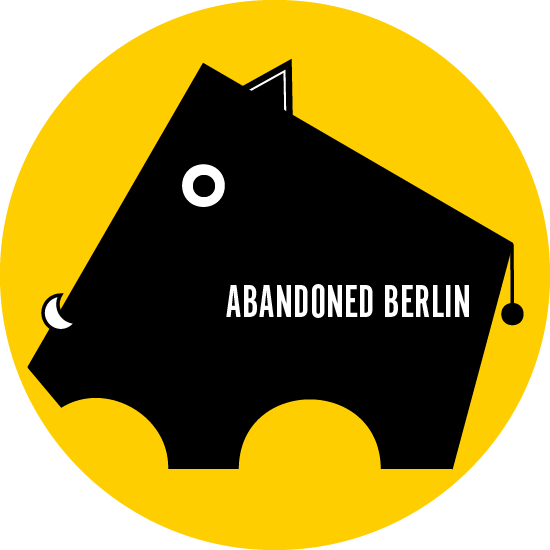




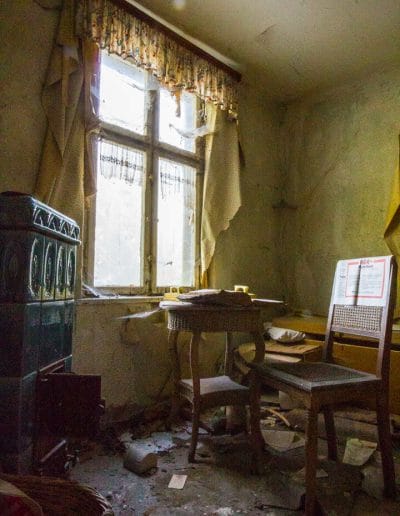
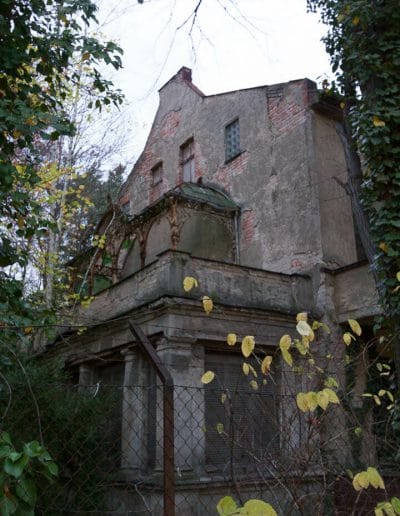
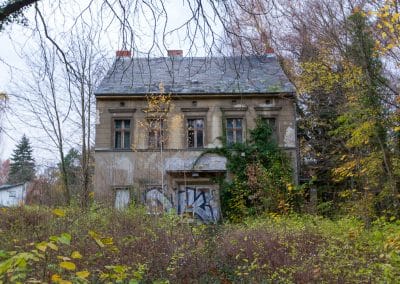
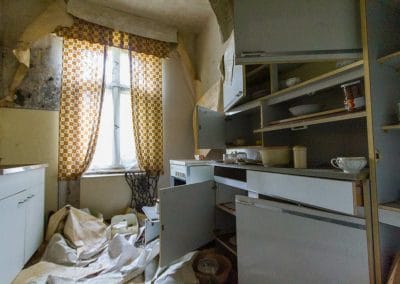
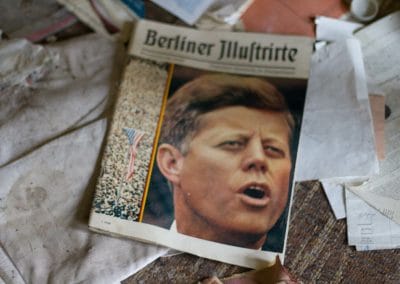
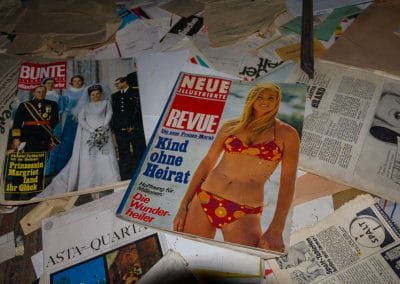
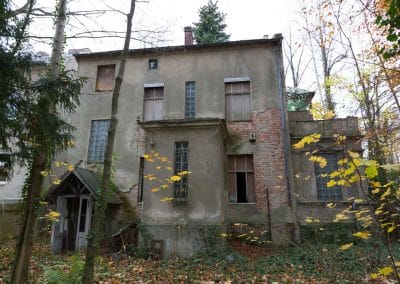
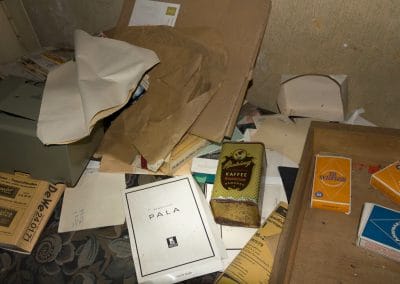
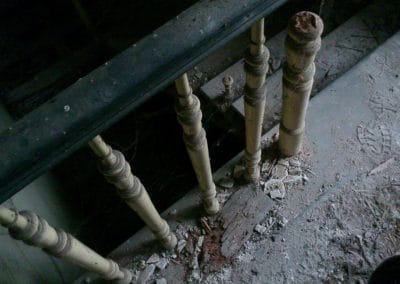
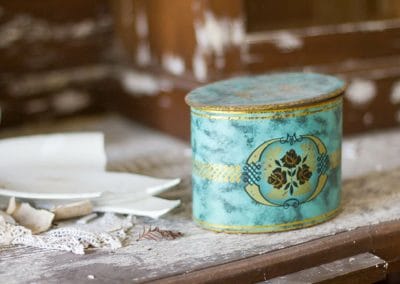

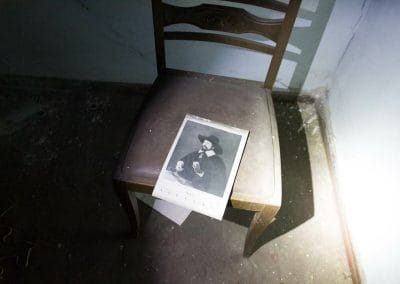

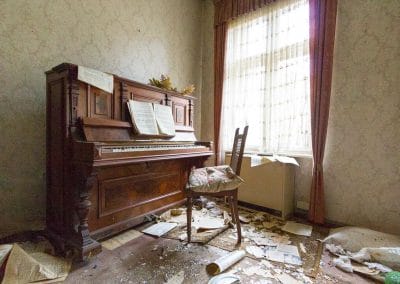

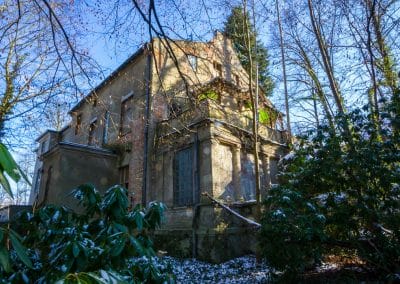
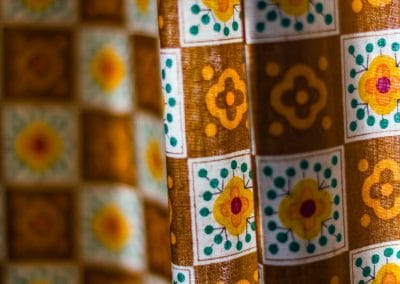

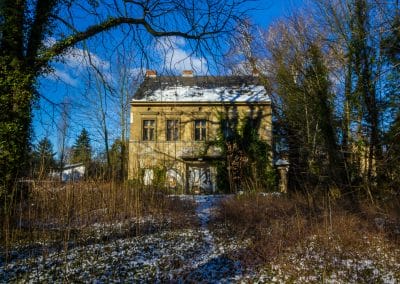

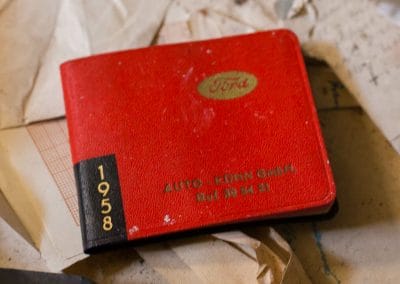

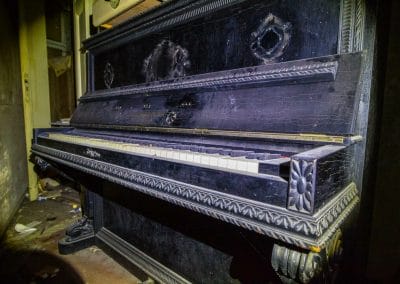
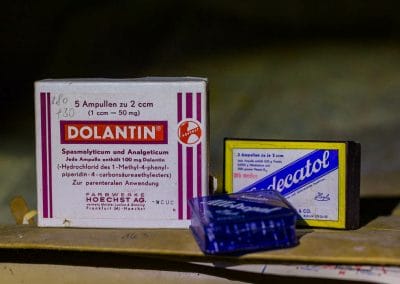
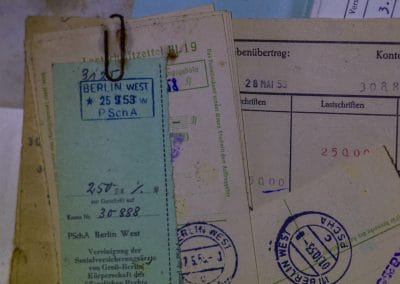
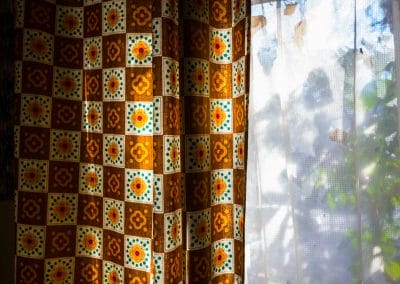
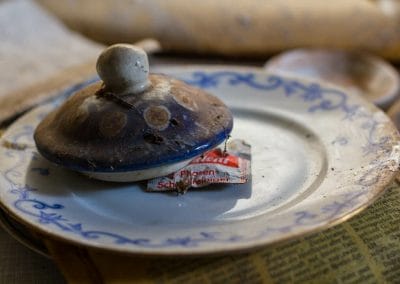




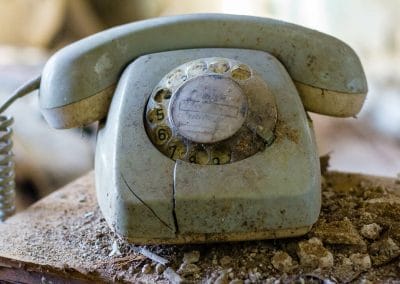
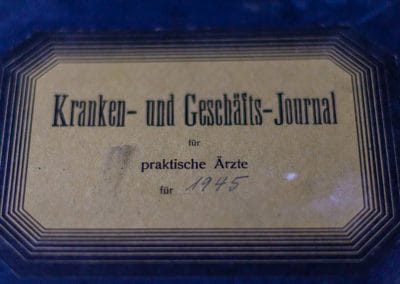
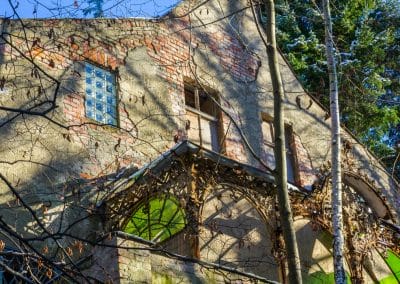
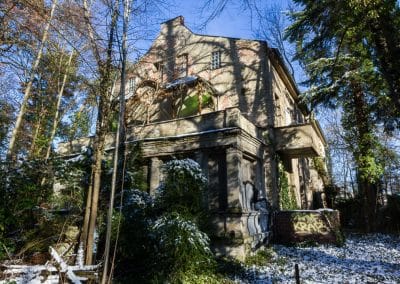
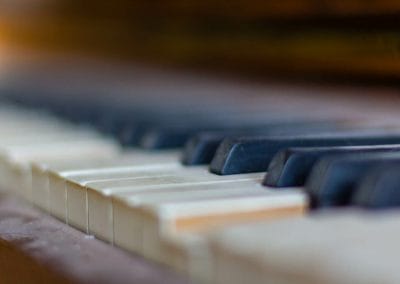

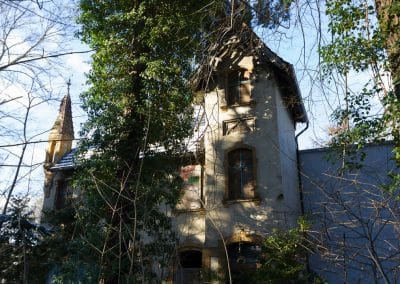

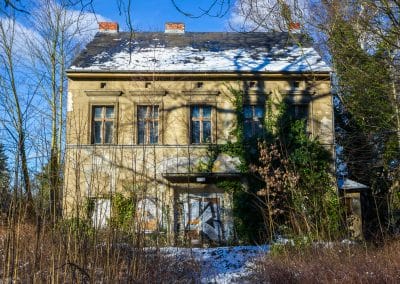

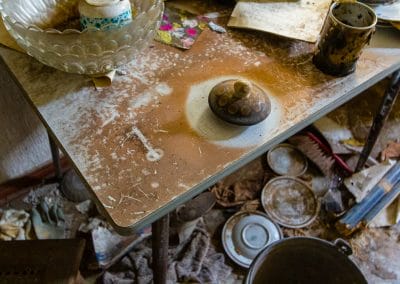
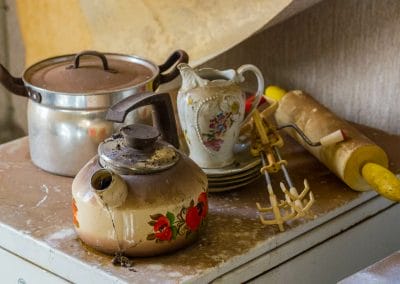


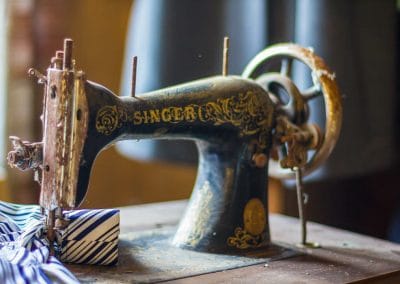
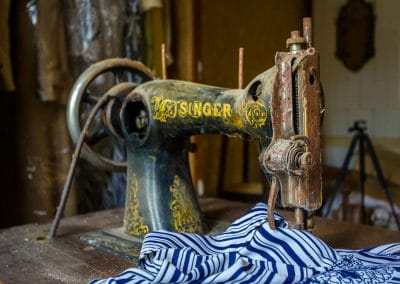


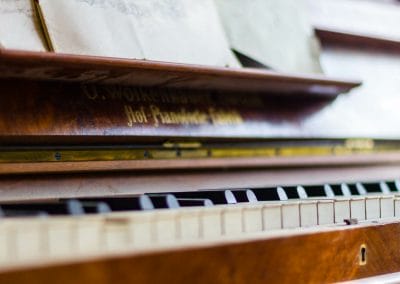
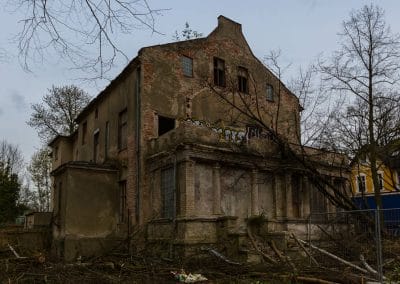
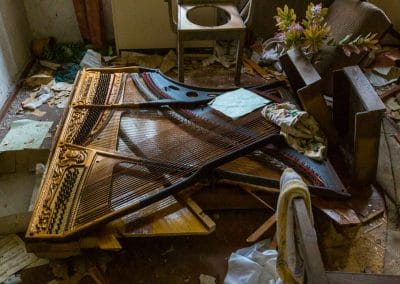

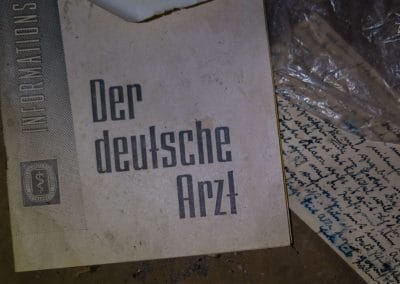

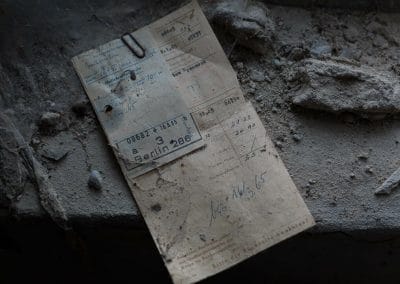

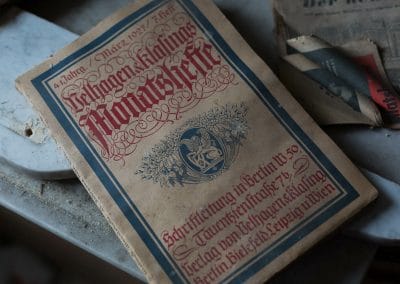
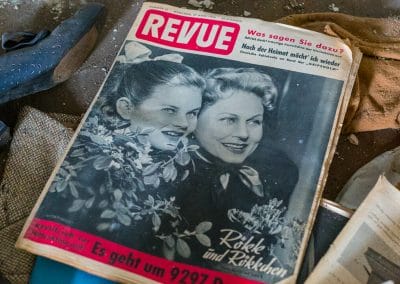
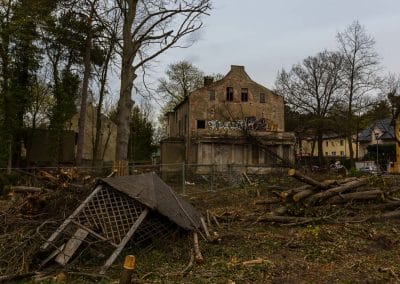
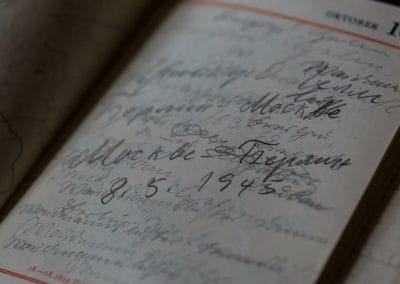

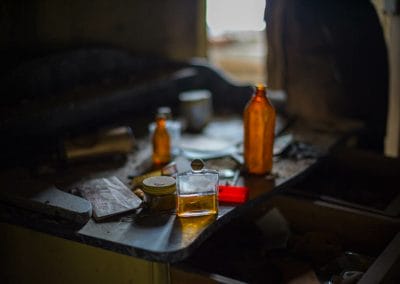

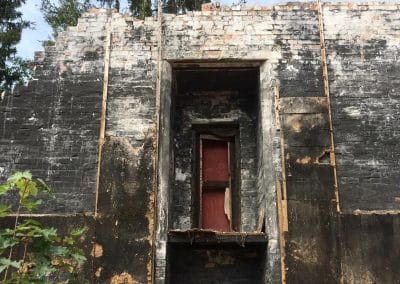
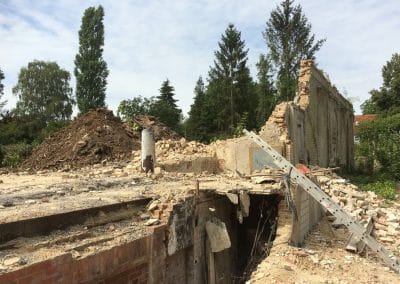
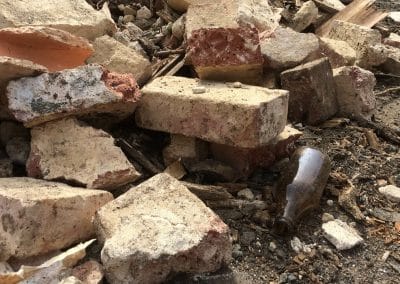
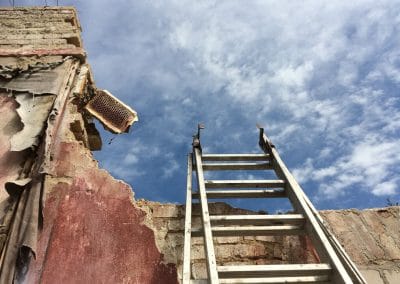
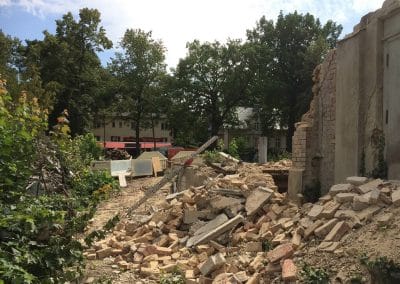
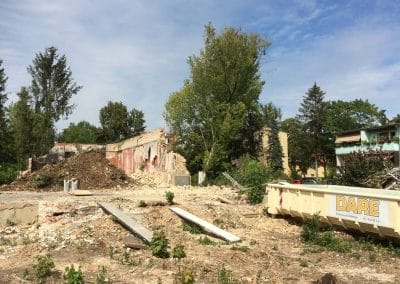
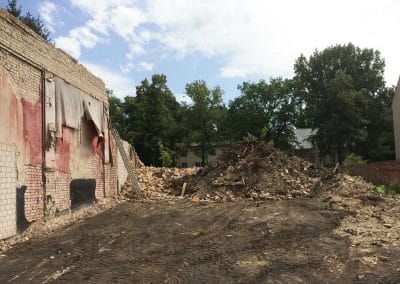

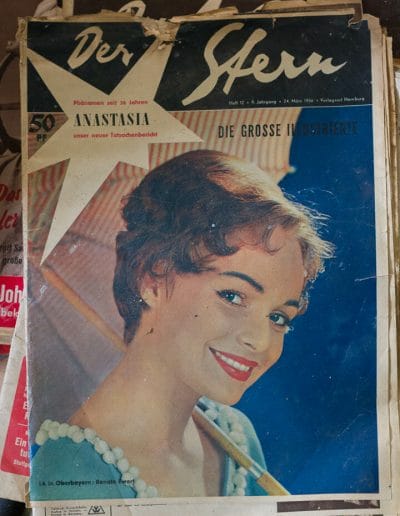

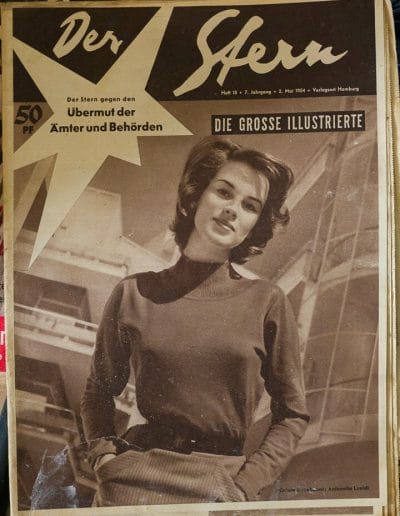



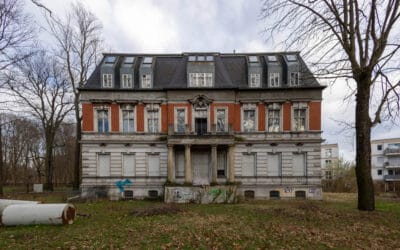
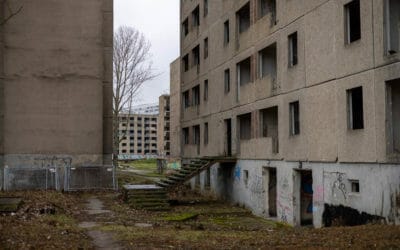

Lovely article! The fake flowers & bowls still in the same position as I arranged them for my photos. 🙂
shwmc.tumblr.com/post/106631067654/the-cinema-directors-house-berlin
I wish the cinema director’s house that beautiful piano music sounds in its walls one last time before it collapses.
Hi Evi, do you still have these photos?
Where were the nosey neighbors to call the Polizei when Friedrich Schade needed them?
Thank You!
You have made me take a Sweden-Berlin trip solely based on Your excellent work!
I didnt quite see where the third bulding would fit in (the one with the tower), but as I took a quick tour I realized it´s probably the servants house right?
Fredrik from Sweden
Still twitching behind their curtains.
Beautiful photos. Thanks for sharing!
The piano fills me with songs. This place is magnificent. Like many others, it’s a secret place.
I tried to go there with my girlfriend today. Getting into Villa Schade isn’t difficult. Our problem though was that some neighbor yelled from his balcony at us to leave before we could even enter. We did, went around the block hoping he wouldn’t have noticed us this time. Went in, took some photos, only minutes later we heard someone, neighbor had apparently seen and followed us inside the building. He told us to leave (Hausfriedensbruch) or he would call the Police. We left but plan to go there again early morning when the neighbor is (hopefully) still asleep. He seems to be watching from his balcony all day.
Place is going to be destroyed in autumn since some investors from Hamburg have bought it and are going to build apartments so pay a visit before it is gone forever.
Once inside also beware of a nasty hole on ground floor in the dark room, which is filled with relics of Dr. Helm’s doctor’s office. It is on the left side of the window front and maybe covered with papers….
Die Villa lässt sich gut betreten und ist auch noch vorhanden. Obdachlose haben hier gehaust und es liegen Fäkalien rum. Das Kino wurde komplett abgerissen.
The Cinema is not more possible, only the villa. But homeless people used it as toiletts.
NOT WORTH IT ANYMORE.
We went there yesterday, and I can assure, sadly, the place is not worth it anymore.
First of all, the second house on the corner has been demolished.
The first house is still here and it was very easy to get in : you can jump the (very small) fence in front of the house, of if you’re afraid of being seen by the neightbors, there’s even a hole in the fence if you go right of the house.
There’s an open door on the ride side of the house as well.
But the place has been totally trashed. And when i mean totally, i mean TOTALLY. Absolutely everything has been destroyed, there are tags everywhere. Really, there’s only garbage left.
We didn’t try to go on the second floor cause it seemed pretty dangerous: we could literraly see through the ceilings. We felt like it wasn’t secure at all to go there.
So it’s really sad cause your pictures are amazing, and I imagine how beautiful and magic this place was in the past. It’s sad to think some people just go there to smash everything down and destroy everything.
Thank you for your amazing blog and for all the tips and very documented articles !
I wish someone would go gather any belonging left and set them on their own shelves as time capsules and momentoes to these people’s lives and an era long past.
Die Villa Schade ist bereits abgerissen… Kino Hubertus steht noch…
The cinema is also destroyed. There is nothing left here :/
I was there with a friend in June 2019. There is nothing left… All is destroyed and at best you will see one or two walls standing in the middle of an empty fieldw surrounded by habited houses on the main Street. Sadly, those 2 places no longer exist .